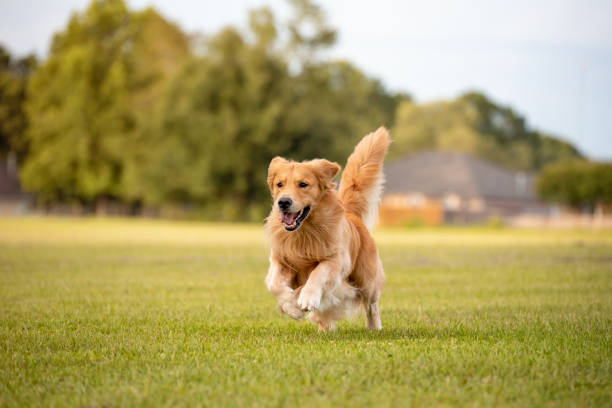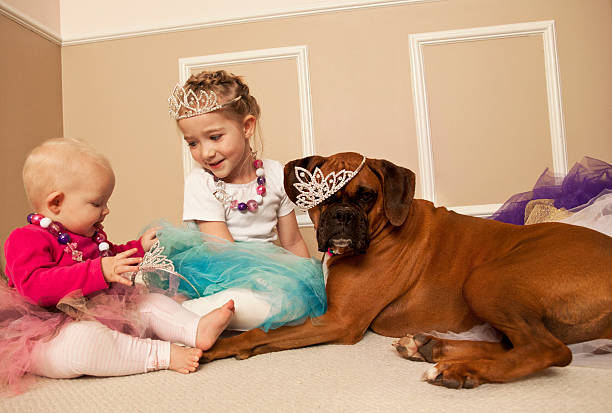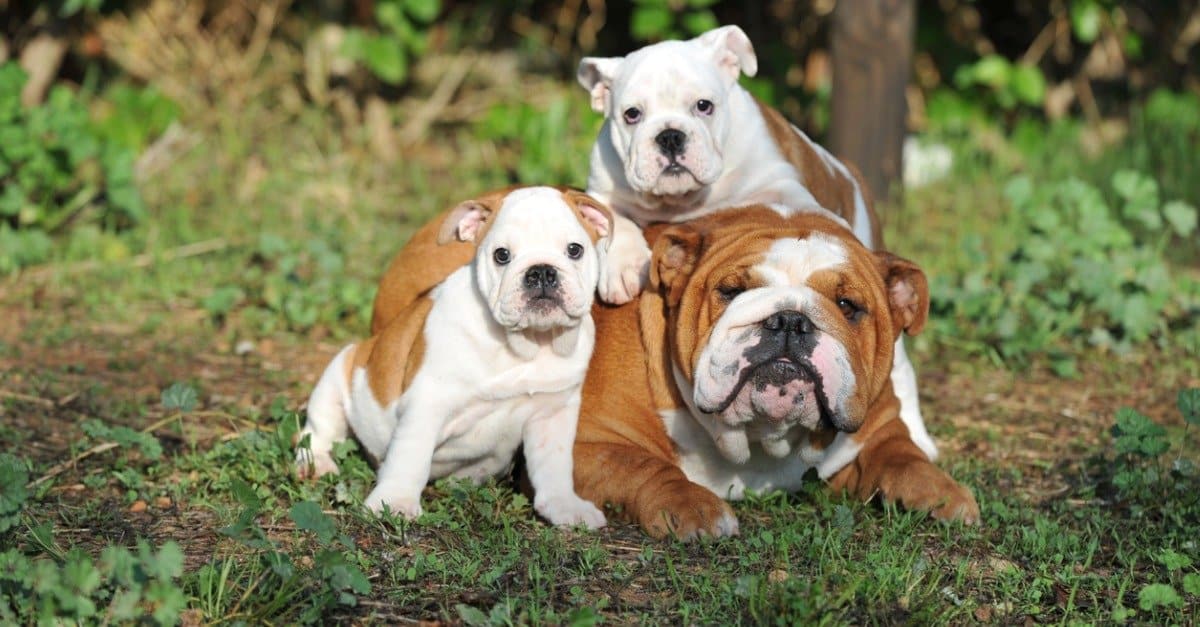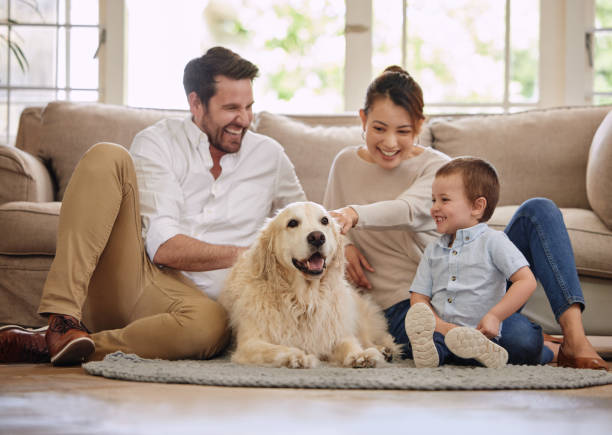Best Dog Breeds for Families: Which Breeds Are Kid-Friendly?
Did you know that approximately 48 million households in the U.S. have a pet dog? The bond between children and dogs can be incredibly special, but the right breed can make all the difference. Some breeds are known for being particularly gentle and patient, making them perfect for families.
Breeds like Labrador Retrievers and Golden Retrievers have long been favorites due to their friendly and tolerant nature. According to the American Kennel Club, these breeds are not only affectionate but also highly trainable. This makes them an ideal addition to any family looking for a loyal and loving companion.
- Labrador Retriever: Known for their friendly and patient temperament.
- Golden Retriever: Gentle, loyal, and highly trainable.
- Beagle: Curious, affectionate, with a playful nature.
- Boxer: Energetic and protective yet great with kids.
- Bulldog: Calm and easygoing, ideal for families of all sizes.
Best Dog Breeds for Families: Which Breeds Are Kid-Friendly?
When it comes to finding the best dog breeds for families, Labrador Retrievers always stand out. These dogs are known for their friendly and patient nature, making them perfect for kids. They are also highly trainable, which helps in creating a safe environment. Labradors can adapt well to different household activities. This versatility makes them a popular choice for families.
Golden Retrievers are another excellent option for families with children. These dogs are not just friendly but also very gentle, adding to their kid-friendly appeal. They are known for their loyalty and intelligence, often making them easy to train. Their playful nature ensures that kids will always have a companion. Golden Retrievers also blend well in both small and large families.
If you’re considering smaller dog breeds, Beagles might be a good choice. These dogs are known for their friendly and curious personality. They love to play, which is great for active children. Their size makes them easier to manage in smaller homes or apartments. Despite their small size, Beagles are sturdy and love outdoor adventures.
Boxers are also renowned for being excellent family dogs. Known for their protective yet friendly demeanor, Boxers are great around children. They have a lot of energy, making them perfect for active families. These dogs are intelligent and can be quite easy to train. Their loyal nature ensures they form strong bonds with family members.
1. Labrador Retriever

Labrador Retrievers are well-known for their friendly and outgoing personality. These dogs are one of the most popular breeds in the United States. They love being around people and are very sociable, making them great for families. Labs are also gentle and patient with children, adding to their kid-friendly nature. This loyal breed adapts well to different environments.
Labs have high energy, so they require regular exercise to keep them happy and healthy. They love to play fetch and enjoy swimming, which can be a fun activity for the whole family. Due to their energetic nature, daily walks or runs are beneficial. Engaging them in activities helps in managing their weight. This keeps their energy levels balanced.
Training a Labrador is often straightforward thanks to their intelligence. They respond well to positive reinforcement techniques and love learning new tricks. Consistent training from a young age can teach them important commands. They tend to bond quickly with family members, making training sessions even more effective. Labradors thrive on praise and treats.
In terms of care, Labradors have a short, dense coat that requires regular grooming. Weekly brushing helps manage their shedding, which is moderate throughout the year. They are prone to certain health issues like hip dysplasia, so regular vet check-ups are important. Providing a balanced diet also supports their overall well-being. Ensuring they maintain a healthy lifestyle contributes to their longevity.
2. Golden Retriever
Golden Retrievers are celebrated for their gentle and friendly disposition. They’re often seen as the ideal family dog due to their patience and love for humans. These dogs enjoy being part of family activities and are great companions for children. Their playful nature makes them perfect playmates for kids of all ages. Goldens are also easily socialized with other pets.

Regular exercise is essential for Golden Retrievers as they are an active breed. They enjoy activities like running, hiking, and swimming. This not only keeps them healthy but also channels their energy positively. Daily walks and play sessions help maintain their physical and mental well-being. Goldens thrive in an active household that matches their zest for life.
Training a Golden Retriever is usually a pleasant experience due to their intelligence and eagerness to please. Consistent and positive training methods work best with them. They quickly learn commands and enjoy training sessions, which can include fun tricks. Their ability to learn fast makes them popular in therapy and service dog roles. A well-trained Golden is a happy family member.
Golden Retrievers have a beautiful, thick coat that requires regular grooming. Brushing their coat multiple times a week helps keep it shiny and reduces shedding. They are prone to certain health concerns like hip dysplasia and heart issues. Routine vet visits can help detect and manage these conditions. A nutritious diet also plays a crucial role in their overall health.
3. Beagle
Beagles are known for their friendly and curious nature. These small-to-medium sized dogs are an excellent choice for families with young children. Beagles are playful and energetic, making them great companions for kids. They enjoy exploring and sniffing around, thanks to their strong sense of smell. This breed is also known for having a cheerful and affectionate disposition.
This breed is famous for its intelligence and keen sense of smell, often used in search and rescue missions. However, Beagles do require a good amount of exercise to keep them happy. Daily walks and playtime are essential to drain their energy. Interactive toys can also keep them mentally stimulated. Providing ample activities can prevent boredom and destructive behavior.

Training a Beagle can sometimes be challenging due to their independent nature. Consistent and patient training methods are crucial. Using positive reinforcement, like treats and praise, can yield better results. Early socialization is also important to ensure they interact well with other pets and people. Training them from a young age can help curb undesirable behaviors.
Beagles have a short coat that requires minimal grooming. Regular brushing helps keep their coat healthy and reduces shedding. Keeping their ears clean is important as they are prone to ear infections. Routine vet check-ups are necessary to monitor their overall health. Maintaining a balanced diet also supports their well-being and longevity.
Beagles are generally healthy but can be prone to certain conditions. They can suffer from hip dysplasia and epilepsy. Awareness of these issues can help in early detection and treatment. Regular exercise and a healthy diet can mitigate some health risks. Being proactive about their health ensures a happy, long life for your Beagle.
Overall, Beagles make wonderful family pets due to their lively and affectionate nature. Their small size makes them suitable for both houses and apartments. With proper care, Beagles can be a delightful addition to any family. Their cheerful personality and loyal nature make them a favorite choice among dog lovers.
4. Boxer

Boxers are popular family dogs, known for their affectionate and playful nature. These medium to large-sized dogs have a strong build, making them both protective and energetic companions. Boxers are incredibly loyal and bond closely with their human families. They have a great sense of humor and love to entertain children with their goofy antics. Their playful energy makes them a fun addition to any household.
These dogs require regular exercise to stay healthy and happy. Boxers enjoy activities like running around the yard, playing fetch, or taking long walks. This breed thrives in an active family setting where they can burn off their energy. Engaging them in different exercises helps maintain their physical and mental well-being. A well-exercised Boxer is a calm and happy pet.
- Daily walks
- Interactive play sessions
- Outdoor adventures
Training Boxers can be a rewarding experience due to their intelligence and eagerness to please. However, they can sometimes be a bit stubborn, which makes patience essential. Consistent and firm training with positive reinforcement works well with this breed. Early socialization helps them interact well with other animals and people. Trained Boxers are attentive and obedient family members.
Grooming a Boxer is relatively easy thanks to their short coat. Regular brushing keeps their coat clean and shiny while reducing shedding. Boxers tend to have sensitive skin, so using gentle grooming tools is advisable. Routine vet check-ups help monitor any potential health issues. Proper care ensures they remain healthy and vibrant.
Boxers are generally healthy, but they can be prone to certain conditions. These include hip dysplasia and heart-related issues. Regular vet visits help detect and manage these health concerns. Providing a balanced diet and maintaining an active lifestyle can reduce health risks. With proper care, Boxers can enjoy a long and happy life.
5. Bulldog

Bulldogs are renowned for their friendly and easygoing temperament, making them excellent companions for families. Despite their tough-looking exterior, they are gentle and affectionate dogs. Bulldogs are particularly known for their patience around children. This breed enjoys lounging around and doesn’t need much exercise. Their laid-back nature makes them suitable for both houses and apartments.
Though they enjoy short, leisurely walks, Bulldogs should avoid excessive exercise. Their unique body structure can make breathing difficult if they overexert themselves. A brief daily stroll is usually sufficient to keep them healthy. Playtime indoors also counts towards their exercise needs. Finding a balance keeps them both happy and healthy.
- Short daily walks
- Indoor play sessions
- Avoid intense activities
Training Bulldogs requires a gentle and consistent approach. They may show some stubborn traits, but with patience and positive reinforcement, they can learn new commands. Early socialization helps them get along with other pets and people. Bulldogs respond best to training that involves a lot of encouragement and treats. Keeping sessions short and fun makes them more responsive.
Bulldogs have a short, smooth coat that requires minimal grooming. Regular brushing helps keep their coat clean and reduces shedding. It’s essential to clean their facial wrinkles to prevent skin infections. Routine vet visits assist in monitoring their health. A well-cared-for Bulldog enjoys a comfortable life as a beloved family member.
Factors to Consider When Choosing a Family Dog
Choosing the right family dog involves several important factors. One of the key considerations is the dog’s temperament. Some breeds are naturally friendly and patient, making them ideal for households with children. It’s essential to choose a breed that matches your family’s lifestyle. A calm and gentle nature can often coexist peacefully in busy homes.
The size of the dog is another crucial factor to think about. Large dogs need more space and might not be suitable for small apartments. If you have young kids, a medium-sized dog may be easier to manage than a giant breed. Smaller dogs often suit urban living but remember they can be just as energetic as larger ones. Make sure the space at home accommodates their needs.
- Temperament
- Size
- Lifestyle Compatibility
Exercise needs vary greatly among different breeds, impacting your decision significantly. Active families might prefer high-energy dogs that enjoy running and playing outdoor games. Conversely, if your family leads a quieter life, lower-energy breeds might fit better. Consistently meeting these exercise requirements contributes to the dog’s happiness and health. Think about daily routines before choosing.
Allergies are also a concern when adding any pet to your household. Hypoallergenic breeds produce less dander and can alleviate allergy issues for sensitive family members. Regular grooming is necessary for all dogs but particularly if you’re managing allergies in the home environment. Balancing grooming needs with potential allergens helps maintain harmony in families with sensitivities. Proper precautions ensure everyone stays comfortable.
The age of the dog should also be taken into account when selecting a new furry friend for your family . Puppies require significant training and socialization efforts . An adult or senior dog might already possess well-mannered behavior , which could ease integration into family dynamics . Keep commitment levels realistic based on available time for training . Understanding obligations upfront leads to long-term satisfaction.
The Relationship Between Dogs and Kids
The bond between dogs and kids can be incredibly special. Many children view their dogs as best friends and playmates, enjoying countless hours of shared fun. This relationship often teaches kids important values like empathy and responsibility. Having a dog can help children build confidence by caring for another living being. The love and companionship from dogs can have a positive impact on a child’s emotional well-being.
Certain breeds are known to be particularly kid-friendly due to their gentle and patient nature. For example, Labradors and Golden Retrievers often excel in family environments. These dogs are tolerant and friendly, making them ideal for homes with young children. Their playful energy matches that of kids, ensuring a strong, positive connection. Breeds like Beagles and Boxers also demonstrate similar traits.
Safety is a pivotal factor in the relationship between dogs and kids. Proper training and socialization ensure dogs understand boundaries and behave appropriately. Teaching children how to interact with dogs respectfully is equally important. Families should establish clear rules for both pets and kids to follow. Consistent supervision during interactions can prevent accidents.
- Teach respect for animals
- Engage in supervised play
- Prioritize training
Including a dog in family activities strengthens their relationship with children. Everyday activities such as family walks, playtime in the yard, or trips to the park provide opportunities for bonding. Dogs often enjoy being part of these moments, enhancing their connection with kids. These shared experiences foster teamwork and mutual understanding. A well-integrated dog can become a beloved member of the family.
Health benefits also arise from the interaction between dogs and kids. Playing with dogs encourages physical activity, which is beneficial for children. Active play can help reduce stress and improve mood for both kids and dogs. This physical engagement promotes a healthier lifestyle. Both mental and physical health improve through the positive influence of a canine companion.
Dog Training Tips for Families
Training a family dog is an essential task that benefits everyone in the household. Establishing clear, consistent rules can lead to a well-behaved pet. Consistency is crucial for dogs to understand expected behavior patterns. Involving all family members in the training process helps reinforce these rules. It also ensures everyone is on the same page regarding commands and expectations.
Positive reinforcement is a highly effective training method. Offering treats, praise, or affection when your dog follows commands encourages them to repeat the behavior. Dogs thrive on positive feedback, making it easier for them to learn new tricks. Keeping training sessions short and consistent prevents them from becoming overwhelming. A well-trained dog is often more confident and happier.
- Use treats and praise
- Keep sessions short
- Be patient and consistent
Socialization is a significant part of training, especially for puppies. Exposing them to new environments, people, and other animals helps them become well-adjusted adults. Supervised play dates with other dogs or visits to pet-friendly parks can improve their social skills. Teaching dogs to interact positively with various stimuli can reduce anxiety and aggression. Early socialization sets the foundation for how they behave in different situations. 
It’s important for families to teach children how to safely interact with their dog during training. Kids should learn to approach dogs gently and respect their boundaries. This includes avoiding rough play and understanding the signs of a stressed or tired pet. Encouraging children to participate in training helps build a better relationship between them and the dog. Proper interaction fosters mutual respect and trust.
Basic commands like sit, stay, and come are crucial for a well-mannered dog. These commands are not only practical but they also improve communication with your pet. Teaching these basics should be the first step in any training regimen. Once your dog masters simple commands, you can introduce more advanced training. Continuous learning keeps the dog’s mind sharp and engaged.
How to Prepare Your Home for a New Dog
Bringing a new dog into your home is an exciting event, but preparation is key to a smooth transition. Start by designating a specific area in your house for the new pet. This can be a corner in your living room or a separate space with everything they need. Having a consistent area helps the dog feel secure and minimizes stress. Remember, the goal is to create a comfortable and welcoming environment.
Safety is an important consideration when preparing your home for a new dog. Ensure that any hazardous items such as cleaning products, cables, or small objects are out of reach. Installing baby gates can prevent access to stairways or off-limit rooms. Child-proof latches can be beneficial for keeping cabinets closed. Identifying and securing potential dangers keeps your new dog safe.
- Remove hazardous items
- Install safety gates
- Secure electrical cords
Stocking up on essential supplies is crucial before your new pet arrives. These include food, water dishes, and a comfy bed. Toys are also important to keep them entertained and help with teething if you’re adopting a puppy. Collars, leashes, and ID tags should be ready as well. Having these supplies ensures that your new dog feels at home from the day they arrive.
Setting up a routine from the beginning can make your dog feel more settled. Establish regular times for feeding, walks, and bathroom breaks. This not only helps the dog adapt but also makes training easier. An established routine provides structure, which can ease anxiety and promote good behavior. Dogs thrive in environments that are predictable and balanced.
Introducing your new dog to other pets in the household requires patience. Initial meetings should be conducted in a calm and neutral space. Supervised introductions can help prevent conflicts and establish a positive relationship. Giving each pet their own space initially can reduce territorial issues. Taking things slow leads to a harmonious multi-pet household.
Frequently Asked Questions
Understanding which dog breeds are best for families involves considering various factors. Here, we address common queries to help you make informed decisions.
1. What makes a dog breed good with children?
Dog breeds that are good with children typically display friendly and patient temperaments. They are usually tolerant and gentle, making them ideal for households with active kids. These breeds often exhibit playful behaviors that match the energy levels of children. Their ability to adapt to new experiences also enhances harmonious living.
These family-friendly dogs tend to be protective yet gentle. Such breeds often enjoy being part of family activities, forming strong bonds. Their calm nature helps them handle varying dynamics within a household. Consistent positive interactions further strengthen their relationship with children. Choosing such breeds encourages a nurturing environment for both dogs and kids.
2. Are small dog breeds suitable for families with kids?
Small dog breeds can be excellent companions for families, especially if space is limited. However, it’s crucial to teach children to handle them gently, considering their delicate stature. Breeds like Beagles are small yet robust, possessing a friendly demeanor that suits family life. These smaller dogs often enjoy playtime and can adapt well to family routines.
Although small, these dogs require the same level of care and attention as larger breeds. Regular grooming and routine vet visits are essential for their well-being. Training sessions and social interactions bolster their confidence and sociability. Engaging them in family activities encourages a positive household dynamic. They can thrive in a caring and active family environment.
3. How does exercise affect a family’s choice of dog breed?
Exercise needs significantly influence which dog breed might best fit a family’s lifestyle. Active families might prefer high-energy breeds requiring extensive exercise, like Labrador Retrievers. These breeds benefit from regular playtime and outdoor adventures, ensuring they remain healthy and happy. Meanwhile, families with a more relaxed pace might opt for less active breeds.
Adequate exercise not only maintains a dog’s physical health but also their mental well-being. Dogs that enjoy plenty of activities are less likely to develop behavioral issues. Ensuring the breed’s exercise needs align with the family’s routine promotes satisfaction. Tailoring a pet’s exercise regimen encourages a balanced and fulfilling canine life. Compatibility in exercise routines maximizes harmony.
4. How do allergies impact choosing a dog for families?
Allergies can play a major role in selecting a family dog, particularly for those with sensitivities. Hypoallergenic breeds are designed to produce fewer allergens, making them suitable choices for allergy-prone households. Regular grooming and cleaning help minimize allergens in the home. Breeds like Poodles and Bichon Frises are popular choices for these families.
Understanding individual allergy reactions helps in selecting the right breed. Visits to allergists or short interactions with various breeds could provide insights. Keeping the home clean and ensuring good air circulation helps manage allergens. Prioritizing hypoallergenic options makes cohabitation more comfortable. Thoughtful choices lead to a healthier coexistence.
5. What role does a dog’s age play in choosing the right pet for a family?
The age of a dog can greatly influence its suitability for a family. Puppies require substantial time commitment for training and socialization. However, they offer the chance to grow and adapt alongside children. Adult dogs may come with established behaviors but typically need less intensive training.
Older dogs often exhibit a calmer demeanor, making them suitable for families seeking a relaxed pet. They might have fewer behavioral surprises and require less training. Adoption shelters often provide background insights on adult dogs, aiding decision-making. Selecting an age-appropriate dog ensures habits align with household dynamics. This choice respects family lifestyle and capacities.
Conclusion
Choosing the right breed for your family is a decision influenced by various factors. A dog’s temperament, size, and exercise needs play a crucial role in ensuring a harmonious household. It’s essential to align these traits with your family dynamics. By doing so, you foster lasting bonds and create a loving environment.
Dog training and home preparation are vital for integrating your new pet smoothly. Consistent routines and positive reinforcement build a balanced relationship. These efforts contribute to a joyful coexistence. With careful planning and understanding, your family can enjoy a fulfilling life with your canine companion.

